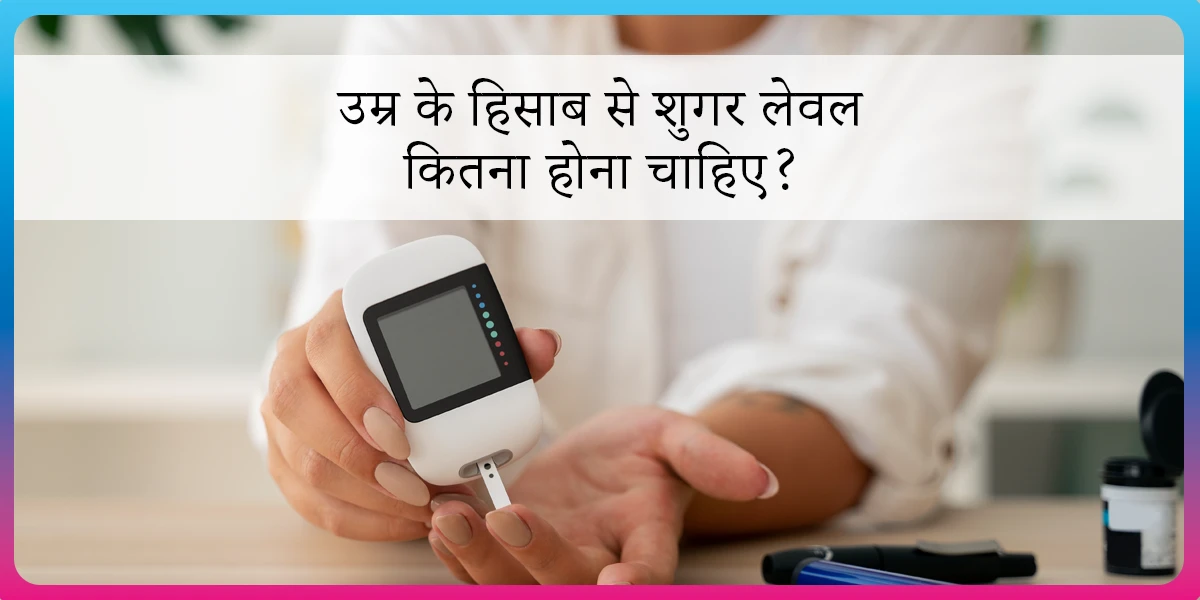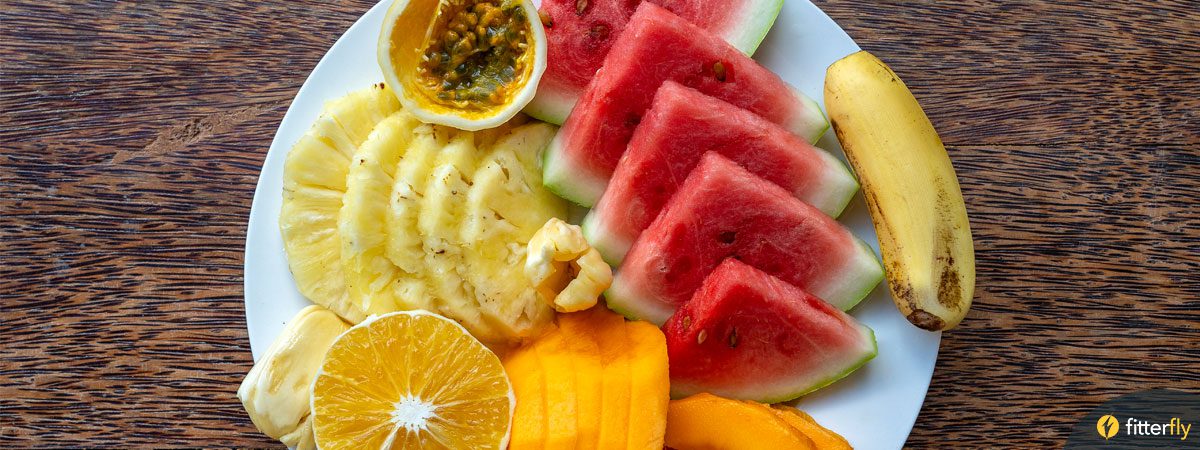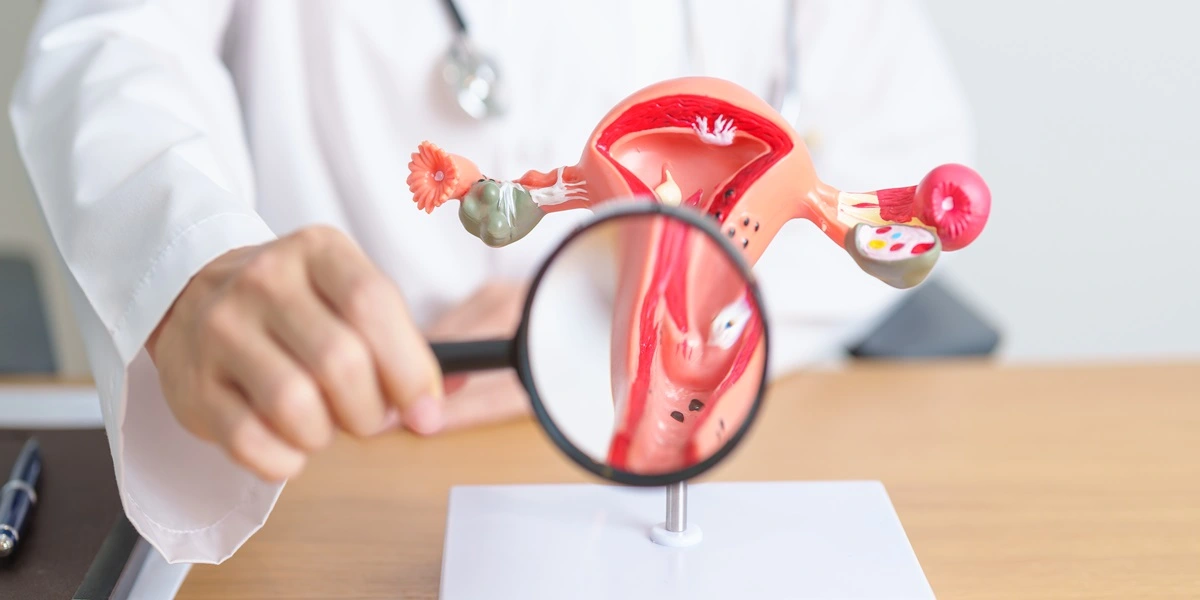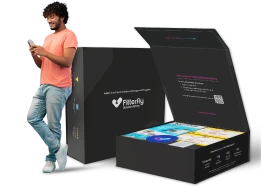Avoid Hidden Sugars: Label Reading for Diabetes Simplified
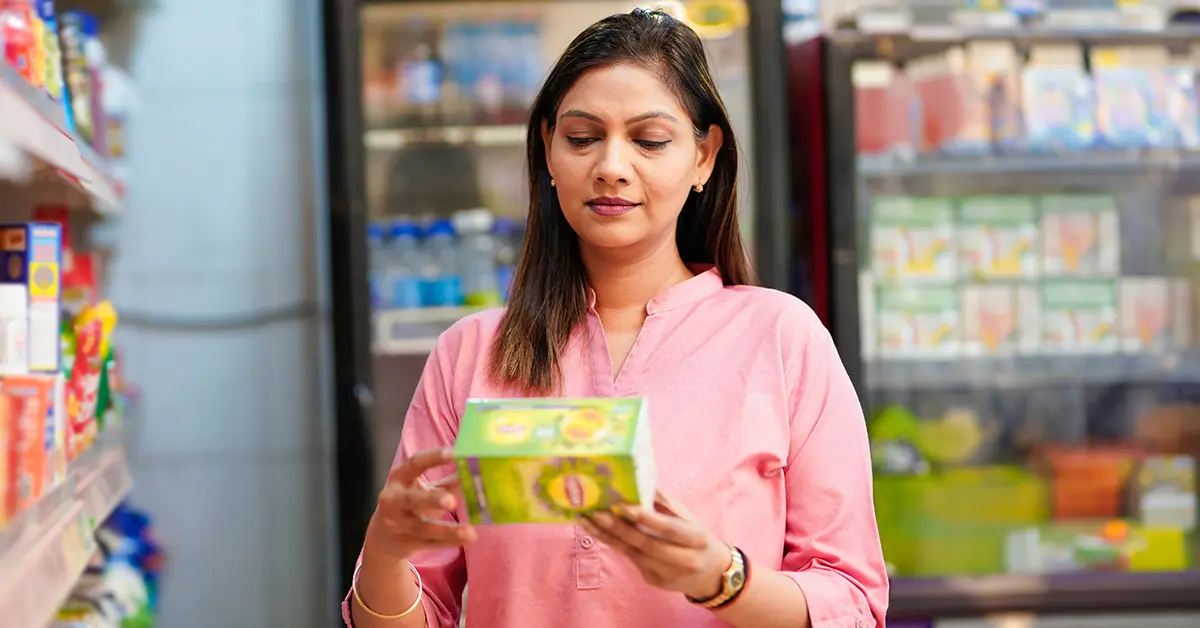
Meet Anuja, a 35-year-old working mom who’s always on the go. She recently realised that those “healthy” snacks she picked up weren’t as healthy as she thought, all because she didn’t check the food labels. Sounds like you?
In today’s world, where health and wellness are top priorities, learning to read food labels is really a necessity – especially if you’re managing conditions like diabetes. Don’t worry; it’s not as complicated as it seems!
In this blog, we have tried to break it down and show you what to look for so you can make smarter choices for a healthier you.
What is a Food Label?
Turn the packet of any food item you buy, say biscuits, chips, frozen pizza, water bottle, or anything else – that grid-like table with Nutritional details and the ingredient list you see behind the packet – that’s the food label.
So, these labels are regulated by that country’s food safety authorities, such as the Food Safety and Standards Authority of India (FSSAI) in India. It ensures that consumers have access to accurate, transparent, and necessary nutritional information about the food item they are consuming.
Food labels typically include:
- Ingredients list
- Nutritional information
- Serving size
- Expiration or best-before date
- Allergy information
- Product Origin
For people with diabetes, the key focus should be on understanding how the nutritional breakdown, particularly sugar and carbohydrate content, can impact blood sugar levels. Let’s explore this further.
Perfect Front Packaging: Is it All True?
The front packaging of a product often highlights attractive health claims like “sugar-free,” “low-fat,” or “high in protein” to catch your attention. However, these claims could be misleading. A product may still contain hidden sugars, unhealthy fats, or artificial ingredients.
To truly understand what you’re consuming, always check the nutrition label and ingredients list. Don’t be swayed by the flashy front – look at the back for the real information!
Why Should You Read Food Labels?
Because that’s where the actual truth about the food item is mentioned, you will know what exactly you are about to consume. So, in detail, these are the reasons why you should always read the food label before buying:
1. Know What’s Inside Your Food
Food labels show exactly what’s in the products you buy. This helps you avoid bad ingredients like extra sugars, preservatives, unhealthy fats, and allergens. By checking things like sugar, fiber, and fat, you can pick foods that are better for your health.
- Added Sugars: Many foods have hidden sugars that can spike blood sugar, which is important to watch for people with diabetes.
Tip: Look out for sugar in processed foods and try to find alternatives.
- Fiber: Foods with fiber, like whole grains and vegetables, help slow down how quickly sugar is absorbed into your blood.
2. Help You Make Healthier Choices
Labels help you pick the healthier option. If you want to cut back on fat, reduce salt, or find foods with more nutrients, food labels give you the info you need to make better choices.
- Sodium: Too much salt can raise your blood pressure, so check the sodium levels.
- Fats: Choose healthy fats like nuts or olive oil, and avoid unhealthy fats found in junk food.
3. Help You to Easily Compare Products
Labels let you compare similar products quickly so you can pick the one that fits your needs. Whether you’re looking for more fiber, less sugar, or extra vitamins, labels help you make the best choice.
To know your chances of Diabetes reversal, take the Diabetes Reversal TestDiabetes Reversal
Calculator
Food Labels Contents: What You Need to Know
Food labels provide vital information about a product, helping you make informed choices. Understanding what each part of a food label signifies can help you assess the quality, safety, and nutritional value of the food you’re purchasing.
Below is a detailed breakdown of the common components found on food labels.
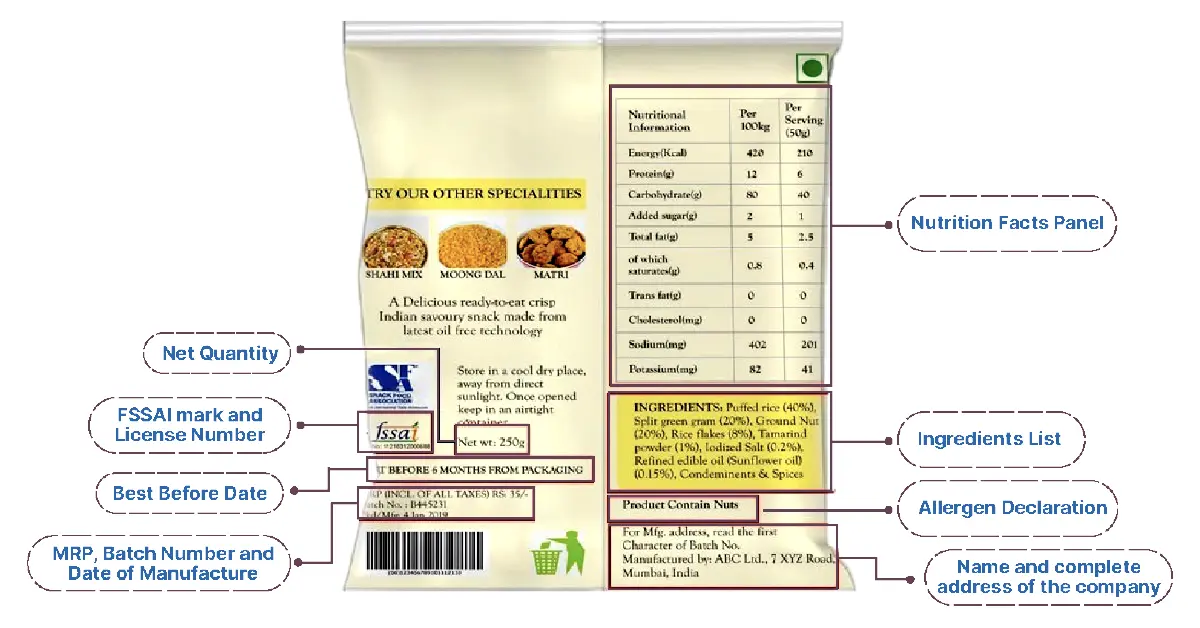
What to Look for on a Food Label?
1. Name of the Food
This tells you what the product is, like biscuits, bread, or juice.
2. Ingredients List
Ingredients are listed in descending order by weight. The first ingredient is present in the largest amount.
Tip: Always check for added sugars, as these can cause blood sugar spikes in people with diabetes.
3. Nutritional Information
Shows key nutrients per serving or 100 grams/ml:
- Calories
- Fats (Total, Saturated, Trans)
- Carbohydrates (Fiber, Sugar)
- Proteins
- Vitamins and Minerals
Example:
In a 400 gm pack, the labelling is typically done either per 100 gm or per serving size (e.g., 2 biscuits = 50 gm).
If the label states:
- Per 100 gm = 350 calories, the total for the 400 gm pack would be:
(350 × 400) ÷ 100 = 1400 calories. - Per serving size (e.g., 2 biscuits = 50 gm) = 175 calories, then for all 10 biscuits:
(175 × 10 biscuits) ÷ 2 biscuits = 875 calories.
Always check the label format to calculate the total correctly! It might sound complicated in the beginning, but once you do this on a regular basis, it will be quite easy (and useful)
4. Veg or Non-Veg Symbol
In India, a green dot indicates vegetarian, while a red dot indicates non-vegetarian, which is usually in the front of the pack itself.
5. Food Additives
Look out for preservatives, stabilisers, and artificial colours like MSG (like in a lot of frozen food, packaged salad dressings like mayonnaise, ketchup, sauces, instant noodles and many others) or sodium nitrate.
Tip: Avoid food containing additives if you are sensitive or allergic to them.
6. Net Weight
Indicates the weight of the product (excluding packaging), which is useful for price comparison
7. Lot/Batch Number
A unique code for tracing or recalling products in case of safety concerns.
8. Identification Number
Provided by regulatory authorities (e.g., FSSAI) to confirm food safety standards.
9. Date of Manufacture
Indicates when the product was made, which is helpful for checking freshness.
10. Best Before/Expiry Date
Tells you how long the product will remain at its best quality.
Tip: Strictly follow the before date for perishables like dairy and meat. For dry goods like bread, slight delays may compromise quality but they are usually safe.
11. Manufacturer Details
Includes the name, address, and contact details of the company for inquiries or complaints.
12. Storage Instructions
Tells you how to store the product to keep it fresh.
Example: “Keep in a cool, dry place” or “Refrigerate after opening (imprortant for dairy and non-veg food like meat, chicken, nuggets etc).”
What Food Packet Logos and Symbols Tell You?
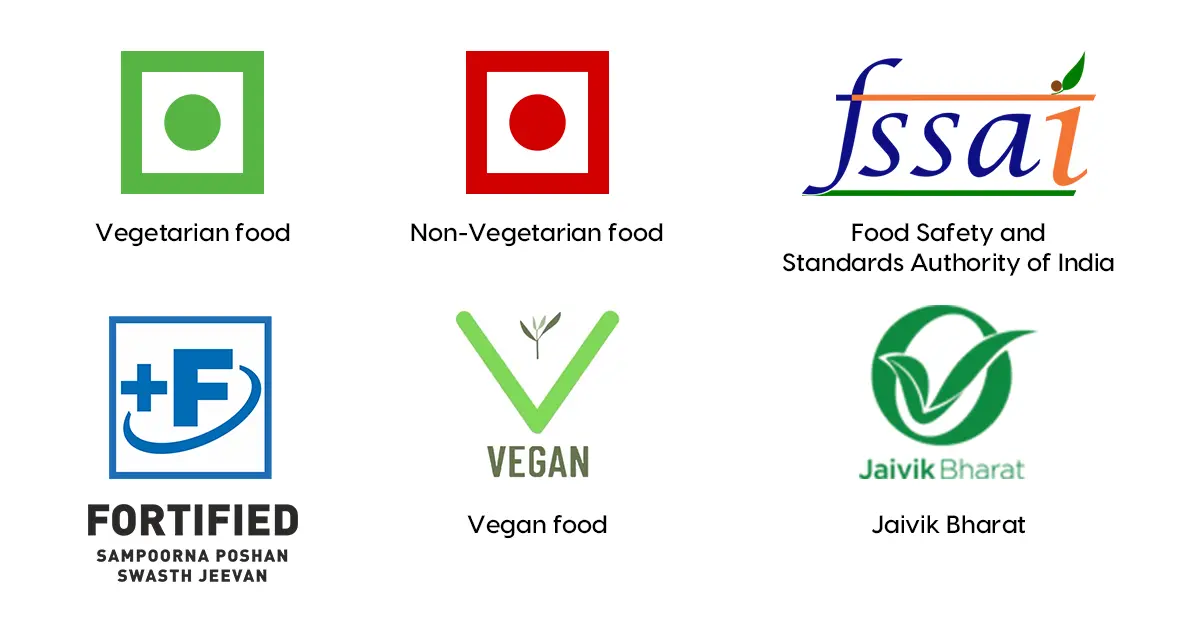

Here’s a table to simplify the logos and symbols often seen on food labels:
| Logo/Symbol | What it Means | Why it Matters |
| Green Dot | The product is vegetarian (no meat, fish, or eggs). | Useful for those following a vegetarian diet. |
| Brown / Red Dot | The product is non-vegetarian (contains meat, fish, or eggs). | Helps you identify non-veg food quickly. |
| FSSAI Logo | The product is approved by the Food Safety and Standards Authority of India. | Ensures the product meets food safety and quality standards. |
| Fortified Logo | Nutrients like iron, vitamins, or minerals are added to the food. | Helps prevent deficiencies. Example: Fortified wheat flour or milk. |
| Vegan Logo | The product contains no animal-based ingredients, including milk and honey. | For those avoiding animal products. |
| Jaivik Bharat Logo | Indicates 100% organic food (free from pesticides and chemical fertilisers). | Ensures the food is certified organic. |
How to Read the Nutritional Information?
Nutritional labels show you how much energy (calories), fats, sugars, proteins, and other nutrients are in the food. Here’s what to keep in mind:
1. Energy (Calories)
Look at the calorie count per serving.
For example, if you’re buying a packet of namkeen, the label might say one serving (30 grams) provides 150 calories. However, if the pack contains 300 grams, eating the entire pack means you’re consuming 1500 calories – 10 times the listed amount! This is why understanding serving sizes is crucial, especially when managing your calorie intake.
2. Carbohydrates and Sugars
Check for added sugars. Too much sugar can lead to weight gain and other health issues.
Example: While 1 teaspoon of sugar in chai might seem manageable, a single 250 ml bottle of a popular soft drink can have 8-10 teaspoons of sugar. Similarly, a serving of gulab jamun or rasgulla can pack in 3-4 teaspoons of sugar, making portion control essential, especially if you’re managing diabetes.
3. Fats
Look for saturated fats and trans fats. Avoid products with “partially hydrogenated oils” listed in the ingredients.
Example: Packaged snacks like frozen nuggets, frozen kebabs, or pre-packed samosa sheets often contain trans fats to enhance shelf life and texture. Similarly, bakery items like puffs and biscuits can be high in saturated fats.
4. Sodium (Salt)
High salt intake can increase the risk of high blood pressure. Choose foods labelled ‘low sodium.’
Example: Instant noodles, chips, and even pickles are loaded with salt. A single pack of noodles can exceed your daily recommended sodium intake.
5. Protein and Fiber
These nutrients keep you full and provide energy. Look for products that are naturally high in fiber (like dals and whole grains).
REVERSED Diabetes in 3 months


5.7%
Happy members
EMI
Guarantee
4.8/5
Diabetes Prime Program
How Should You Understand the Claims on Food Label?
Food manufacturers often use words that sound healthy, but it’s important to look closer. National Institue of Nutrition (NIN) has issued Dietary Guidelines that highlight common claims like:
| Claim | What It Really Means |
| ‘All natural’ | The product has no artificial colours or flavours but may still be processed. Check the ingredients list. |
| ‘Real fruit or fruit juice’ | The food may have only 10% fruit and lots of sugar. Example: Packaged juices with “Real Fruit” labels. |
| ‘Made with whole grain’ | It may contain some whole grain but can still have refined flour (maida). Check the ingredients. |
| ‘Low fat or Light’ | The product may have less fat but extra sugar or starch to improve taste. Still, check the calories. |
| ‘No cholesterol’ | Plant-based oils naturally have no cholesterol but are still 100% fat. Use in moderation. |
| ‘Good source of nutrients’ | Contains 10-19% of a nutrient per serving. Example: Breakfast cereals claiming “rich in iron.” |
| ‘Sugar free’ | No added sugar, but it may have fats, starch, or hidden sugars (like fructose and maltitol). |
Sometimes, the front packaging can be tricky. Here’s how you can avoid being misled:
- Beware of claims mentioned on packets: Compare the claims to the ingredients list. If a product says ‘low fat,’ check if it has added sugar or high carbs. Just because it’s labelled ‘low fat’ doesn’t mean it is low in carbs and hence it’s healthy.
- Check the portion size: A packet might seem low in calories, but the information could be for just one serving. Always compare the serving size to the total package size and multiply accordingly.
- Watch out for hidden sugars: Words like “corn syrup,” “maltitol,” and “fructose” are just different types of sugar.
An example of reading a label – Biscuits
Say you’re buying a pack of biscuits. Here’s how you can decode the label:
- Ingredients: Sugar is listed first, meaning the biscuits have more sugar than wheat flour.
- Nutritional Info: It says ‘low fat,’ but also mentions 300 calories per serving. This could mean it has extra sugar, carbohydrates, or protein to make up for the ‘low fat.’ Remember, low fat doesn’t always mean low calorie.
- Claims: “Sugar free” may sound healthy, but it has maltitol, which can still raise blood sugar.
Better Choice: Compare with another pack that has whole grain, less sugar, and more fiber.
Takeaway Tips for Smarter Food Choices
- Always check the ingredients list – what’s first is present the most.
- Don’t get fooled by fancy claims like “all natural” or “low fat” – read the full label.
- Pay attention to hidden sugars and trans fats.
- Look for certified logos like FSSAI, Fortified, and Green Dot for reliable information.
Understand How Much You Are Eating
When you read food labels, it’s important to understand how much you’re actually eating. Here’s what you need to check:
1. Number of Servings in the Whole Pack
Check how many servings are in the entire pack. For example, if the label says there are 8 servings in the pack, that means all the nutritional values listed are for one serving. So, if you eat the whole pack, you’ll need to multiply the numbers by 8.
2. Nutrient Content for 100g
The label usually shows the nutrient content per 100 grams. This is helpful when comparing products. For example, it might say:
- 402 kcal energy
- 7.29 gm protein
- 55.1 gm carbohydrates
This tells you how much of each nutrient is in 100 grams of the product.
3. Nutrient Content for One Serving
Look at the nutrient content per serving, which is usually listed next to the serving size. For example, if the serving size is 33 gm, the label might show:
- 12 kcal energy
- 2.4 gm protein
- 21.5 gm carbohydrates
If you eat more than one serving, multiply the numbers accordingly.
Additionally, always pay attention to serving size—nutritional information is based on this portion, so adjust accordingly if you consume more than the stated amount. Reading labels carefully empowers you to manage your diet effectively while supporting your health goals.
If You Are Looking For Sugar Content in the Product
When checking the sugar content on food labels, it’s important to recognize the different types of sugar-based ingredients. Sugar can be listed under various names, and understanding these will help you make better choices for your health.
Types of Sugar-Based Ingredients Found on the Label
| Source | Types of Sugars |
| Sugarcane/Beet Sugar | White Sugar, Brown Sugar, Golden Sugar |
| Other Sugar Types | Icing Sugar, Invert Sugar, Golden Syrup, Turbinado Sugar, Demerara Sugar, Molasses |
| Corn-Sourced Sugars | Glucose-Fructose (HFCS), Corn Syrup, Corn Syrup Solids, Dextrose, Glucose, High Maltose Corn Syrup |
| Other Sources of Sugars | Agave Syrup, Coconut Sugar, Date Sugar, Fruit Juice Concentrate, Honey, Maple Syrup, Rice Syrup, Maltodextrin |
| Other Added Sugars | Barley Malt, Cane Juice Crystals, Lactose, Crystalline Fructose, Dextran, Malt Powder, Fructose, Galactose, Disaccharides, Maltose |
Why It Matters
Different types of sugars can have varying effects on your health, especially for people managing blood sugar levels. Some sugars, like high fructose corn syrup (HFCS) and maltodextrin, can cause blood sugar spikes more quickly than others. On the other hand, natural sugars like honey or maple syrup are still sugars and should be consumed in moderation, particularly for individuals with diabetes.
When reading food labels, always check both the sugar content per serving and the types of sugars used in the product. This will give you a more complete understanding of the food you’re consuming and help you make healthier choices.
At Fitterfly, we’ve seen how one small habit – reading food labels can lead to big changes. It has helped our members not only manage diabetes better but also improve their overall health.
With the right guidance and support from our three expert coaches – Nutrition, Fitness, and Success, they’ve transformed their lifestyles and achieved lasting results. Learning to choose foods that align with their health goals is just the beginning.
If you, too, want to experience this positive change for yourself? Join the Fitterfly Diabetes Prime Program today! Call 08068507599 now to get started.
This blog provides general information for educational and informational purposes only and shouldn't be seen as professional advice.
Frequently Asked Questions
What Are Labels Used For?
Labels provide consumers with crucial information to make informed decisions about the products they purchase, including nutritional content, ingredients, allergens, and safety standards. They help guide food choices and ensure transparency.
How to Read a Label for Sugar?
When checking a food label for sugar, look for both total sugars and added sugars. The total sugars include both natural sugars (like those found in fruits) and added sugars. For diabetes, focus on reducing added sugars, which can contribute to blood sugar spikes.
How to Check Labels for Sugar?
Look for terms like high-fructose corn syrup, glucose, honey, and sucrose, which indicate added sugars. Also, pay attention to the "per 100g" measurement to compare sugar content between products.
How Much Sugar Is Okay on a Label?
The American Heart Association recommends that women consume no more than 25 grams (6 teaspoons) of added sugar per day and men no more than 37.5 grams (9 teaspoons). For people with diabetes, it's best to consume even less. Always look for products with minimal or no added sugars.









